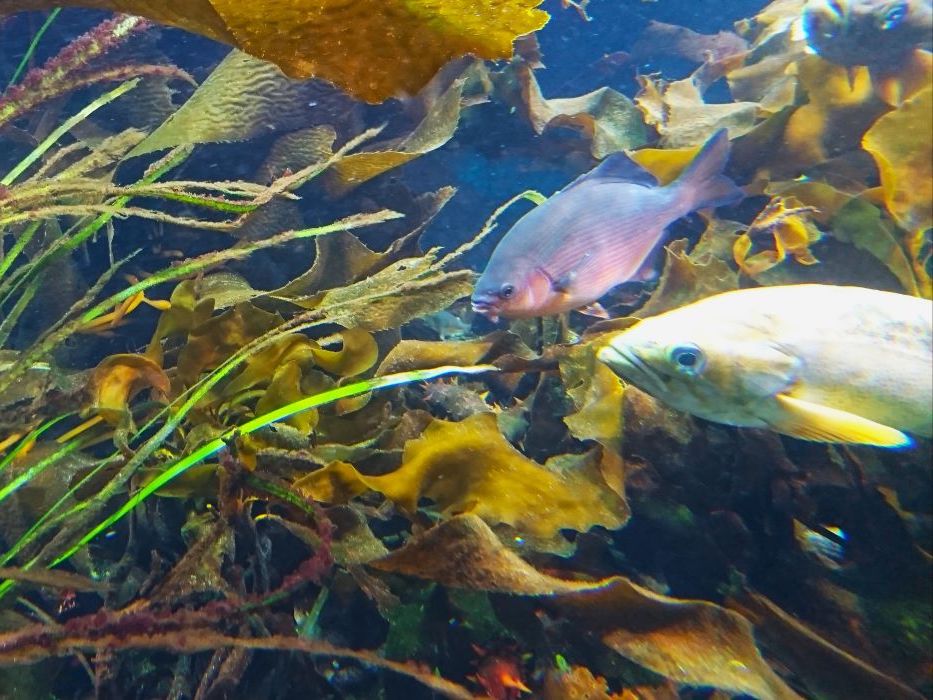The summer of 2023 revealed a dizzying array of new extremes in global heat. While record-breaking air temperatures and vast wildfires affected millions, the world’s oceans showed some of the most significant departures from norms.
Over the span of a single childhood summer vacation, ocean heat extremes emerged that were so substantial they seem to belong to a different era. If 2023 is a harbinger of an era to come, one of climate change made real, the capacity to adapt to such conditions will be paramount — for people, our fellow species and the ecosystems that support life.
Ocean surface temperatures broke many records in 2023. Globally, they hit record highs in May, June and July. As the summer progressed, the daily trend increasingly diverged from the past 40-plus years — so much so that July, which typically has relatively moderate global surface temperatures, saw the single highest daily ever recorded.
High global sea surface temperatures were driven by multiple localized heat waves. In June, in the northeastern Atlantic, a marine heat wave reached government designations of “beyond extreme,” with waters off Ireland and the U.K. exceeding 5 C above monthly long-term averages. More recently, marine heat waves built off Canada’s Atlantic and Pacific. In the Caribbean, a heat-driven widespread coral bleaching event occurred. And, in a refrain from a pattern seen repeatedly, some of the most intense aberrations in sea surface temperatures occurred in the Arctic, where sea ice extent is well below average. As September began, much of the world’s northern oceans showed sea surface temperatures well above average.
Signs of unprecedented change also emerged in the southern ocean, where Antarctic seasonal sea ice formation has been dramatically reduced from both recent averages and previous record lows. The striking aspect of Antarctic sea ice extent is not just that it is at record lows for this time of the year, but that it is so far below recent variability.
Climate scientists have long predicted that climate change would cause these sorts of events. Several other factors may be contributing to 2023’s extremes, including changes to air circulation and air pollution. Furthermore, an unusually long La Niña, which brought cooler waters to the central and eastern Pacific and generally exerted a moderate cooling influence for the past three years, has recently given way to a warming El Niño. The combination of climate change with the emerging El Niño portends a period of particularly intense heat.
As climate change drives extreme heat and similar events worldwide, the diversity of Earth’s living things becomes ever more important to conserve. Biodiversity not only can increase species’ and ecosystems’ resilience to change but also may improve ecological capture and storage of carbon.
For a single species, higher rates of genetic diversity can lead to the species being buffered against change via something known as the “portfolio effect.” Following the same logic as diversified stock portfolios, this natural process occurs when the genetic diversity within a species allows some individuals or subpopulations to excel in new conditions, so that even if other individuals or subpopulations decline, the net effect is to buffer the species as a whole against the new conditions.
A similar concept exists for entire ecosystems, where the presence of multiple, functionally similar species is thought to confer greater overall resilience to the ecosystem, as declines in one species may be offset by increases in a separate but functionally similar species.
The relationship of biodiversity and climate change readiness is a two-way street: not only does biodiversity confer adaptive capacity, but it also can support carbon storage in ecosystems. By eating and moving, trampling and digging, and in general by being their animal selves, animals play a key role in ecosystems’ capture and storage of carbon — on land and in the ocean.
Despite the importance of the issue, Canada has fallen short on its commitments to protect marine biodiversity and must quickly address the gaps. As a signatory to the recent Kunming-Montreal Global Biodiversity Framework, Canada has a chance to get it right.
Through the framework, Canada has committed to halting and reversing biodiversity loss by 2030. To achieve its commitments for marine biodiversity, Canada must implement protected areas for at least 30 per cent of marine waters and ensure that our fisheries and other uses of marine ecosystems are managed in a sustainable, ecosystem-based manner. These steps, while insufficient on their own, are vital components of a necessary shift toward society-wide appreciation for, and protection of, biodiversity.
Climate change is an emerging real-world reality affecting the places we live, the air we breathe, the light we see and the oceans that surround us.
In the face of such overwhelming displays of climate change’s effects, one could easily become discouraged, but action is the best remedy. We must get off fossil fuels and protect and restore the biological diversity of the natural world — including our oceans. ![]()
Read more: Environment

















Tyee Commenting Guidelines
Comments that violate guidelines risk being deleted, and violations may result in a temporary or permanent user ban. Maintain the spirit of good conversation to stay in the discussion and be patient with moderators. Comments are reviewed regularly but not in real time.
Do:
Do not: